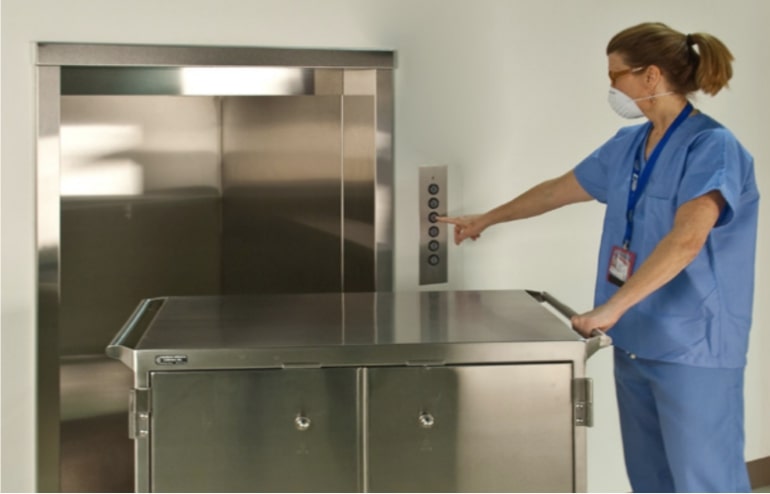Elevators vs. Dumbwaiters – Understanding the Difference
August 17, 2021Contrary to popular belief, the differences between dumbwaiters and elevators are far more than just their size.
In addition to size, dumbwaiters and elevators differ in cost, functionality, mobility offerings, mechanical needs, and even sustainability.
When weighing your options on integrating one of these lifts into your commercial, industrial, or residential space, it’s critical to know all the facts about what sets these two lift systems apart. Let’s explore these differences further below.
Functionality
Arguably, the most significant difference between dumbwaiters and elevators is that they serve completely different functions. Elevators primarily carry passengers while dumbwaiters solely carry items between floors while unattended.
More on Dumbwaiter Functionality

Dumbwaiters are movable enclosures that are powered by an electric motor that guides the enclosure or car on a set of rails. The exact use varies by industry. Each application will demand different models and specs driven by materials lifted, space, vertical lift length, and desired speed.
Commercial settings for dumbwaiters often include restaurants, hospitals, retail outlets, high-rises/multi-floor office buildings, and business complexes — just to name a few.
Residential dumbwaiters are also a popular addition to the home, with dumbwaiter installation making it easier to transport numerous things upstairs and downstairs.
Some of the most popular ways to use dumbwaiters in the home are for moving laundry baskets, grocery bags, heavy household items such as tools and firewood, and many more.
More on Elevator Functionality
In contrast, elevators are platforms or compartments housed in a shaft for raising and lowering people or things to different floors or levels.
Commercial elevators are the most common of elevators you’ll see. Types of commercial elevators range from passenger elevators, wheelchair lifts, and LULA’s (limited use limited access).
Unlike with dumbwaiters, residential elevators are less commonly seen. This lack of residential elevators can be attributed to greater architectural restrictions such as dimensions, load-bearing and cost.
Size & Weight Capacity
As mentioned above, one of the most striking differences between dumbwaiters and elevators is size.
Dumbwaiters consume less space with an area utilization rate that’s 50%-75% less than traditional elevators. Elevators need to maintain ADA compliance requirements and be large enough to transport a certain amount of people depending on the setting the elevator is located in.
Elevators tend to be much bigger than dumbwaiters but the necessary size and capacity will depend on several factors. For example, an office building will require wider elevator cabs than residential elevators to better accommodate large groups.
Choosing the Right Lift System
Choosing the right lift system can be simple with a bit of guidance from Matot’s experts; we’ve been designing, engineering, and manufacturing lift systems for well over a century and can do the same for your project.
Let Matot be your guide to finding the ideal lift system—view our products and discover the industries we serve or contact a representative to learn more.
Back To BlogDownload Masterspecs
Matot’s master specifications are for use for all products.
Browse MasterspecificationsDesign & Planning Services
Our Planning Center has everything from basic information to final drawings.
Get Started With Matot